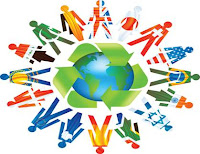My emotions were deeply moved when I was listening to World Forum Radio Podcast with Delfena Mitchell from the Liberty Children’s Home in Ladyville, Belize in Central America. The Liberty Children’s Home is home to 40 children, most between the ages of zero to five-years-old, who have been abused or abandoned. As she was describing the abuse afflicted on a nine-year-old boy my heart was heavy with sadness. This little boy was abused for so many years he completely shut down, including using language to communicate. For one year this little boy did not talk to anyone. The warm, respectable and nurturing environment provided by the staff at the Liberty Children’s Home supported this little boy to trust adults enough to use his language skills again one day while on a horseback ride with Ms. Mitchell. With Belize having the number one incident of child abuse in the Caribbean I was curious to know why the Liberty Children’s Home can only accommodate forty children. After exploring the website I learned there are efforts being made to expand their facilities so they can support the success of additional children.
The staff at Liberty Children’s Home uses the Pikler approach while working with the children. The Pikler approach was developed to ensure optimal development for institutionalized children. I enjoyed reading about the Pikler approach, specifically about how the infants/toddlers are “allowed to move naturally and at will and freely and allowed to spontaneously follow their own in-born developmental time-table” (2010, http://pikler.org). This approach is evident in the work with the nine-year-old little boy; all children are allowed time to heal before they are introduced to the daily routines of academic practices. Allowing this little boy time to heal in a safe, respectful and nurturing environment allowed him to build trust and eventually open up with Ms. Mitchell.
Childhood Poverty Research: Kyrgyzstan
Economic difficulties have followed Kyrgyzstan since their independence from the Soviet Union in 1991. Today is it is the second poorest country in Central Asia. As of statistics from 2001, 47% of the population lived below the government poverty line; 13% of this population were living in extreme poverty. As for children living in poverty, 41% of children living in urban parts of Kyrgyzstan live in poverty and 51% of the children living in rural areas live in poverty. Kyrgyzstan had a higher level of health and education before their independence from the Soviet Union; in 2001 14% of the population had no access to health care. Continued poverty has forced about 24% of children to work on farms, in domestic services, child prostitution and trafficking. The government has produced the National Poverty Reduction Strategy paper in hopes of reducing poverty. There are other national and international non-governmental organizations engaged in poverty reduction for children in Kyrgyzstan.

